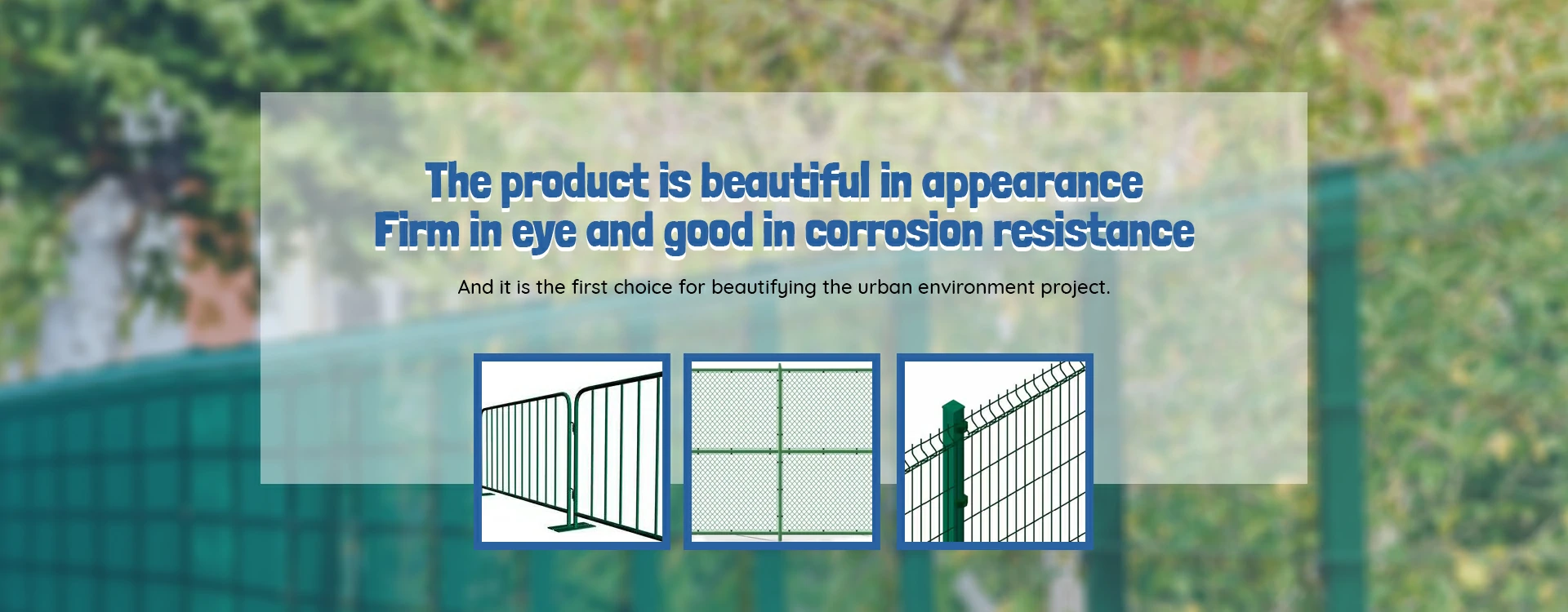 TEL:
+86-13102802206
TEL:
+86-13102802206
 Email:
fencenetting@china.com
Email:
fencenetting@china.com
 Language
Language
 TEL:
+86-13102802206
TEL:
+86-13102802206
 Email:
fencenetting@china.com
Email:
fencenetting@china.com
 Language
Language


The Importance and Versatility of Construction Fencing Panels
Construction sites are often bustling environments filled with equipment, workers, and materials. Ensuring the safety and security of these sites is crucial, which is where construction fencing panels come into play. These panels contribute significantly to site management, providing both physical barriers and a range of practical benefits that enhance the overall workflow and safety of construction projects.
What Are Construction Fencing Panels?
Construction fencing panels are temporary barriers typically made of metal or composite materials. They are designed to enclose construction sites, preventing unauthorized access while protecting both the public and workers from potential hazards. These panels are often portable and can be easily installed, moved, or removed as needed, making them an essential element of site management.
Benefits of Construction Fencing Panels
1. Safety and Security One of the primary roles of construction fencing panels is to ensure the safety of the site. By clearly marking the boundaries of the construction area, they deter unauthorized personnel from entering, which minimizes the risk of accidents and liability issues. This is especially important in urban areas where pedestrians and cyclists may be near the site.
2. Project Management Construction fencing panels help keep the site organized. By segmenting different areas of the project, workers can focus on their tasks without interference. It also creates a clear demarcation of Zones, from loading areas to worker access points, which helps to streamline operations.
3. Environmental Protection During construction, debris and materials can easily scatter if not contained. Fencing panels help to keep materials on-site, reducing litter and preventing environmental contamination. This not only protects the surrounding area but also demonstrates the contractor’s commitment to responsible construction practices.

4. Privacy and Aesthetics Construction sites can be unsightly, often filled with heavy machinery and raw materials. Fencing panels can act as visual barriers, shielding the site from public view. This can be particularly important in residential areas or when the project is high-profile, allowing contractors to maintain a degree of privacy.
5. Compliance with Regulations Many local governments have regulations regarding construction site management, including safety measures. Using fencing panels ensures compliance with these requirements, which can vary from one jurisdiction to another. Proper barriers help avoid fines and legal issues, enhancing the project’s reputation.
6. Customizable Solutions Construction fencing panels come in various designs and sizes, allowing for customization based on the specific needs of a project. Options can include solid panels for privacy, chain-link designs for visibility, or even decorative panels for urban settings. This versatility ensures that contractors can find suitable solutions for their projects.
Types of Construction Fencing Panels
There are several types of construction fencing panels available for different applications
- Chain-Link Fencing This is one of the most common choices for construction sites due to its affordability and durability. It allows visibility while providing a physical barrier. - Solid Panels Made from materials such as plywood or metal, these panels offer complete privacy and security, making them ideal for sensitive projects or urban environments. - Mesh Fencing Lightweight and easy to transport, mesh fencing provides a balance between security and visibility, often used at events or temporary locations. - Hoarding Panels Often seen in urban construction projects, hoarding panels can be customized with branding, artwork, or project information, serving both a practical and promotional function.
Conclusion
Construction fencing panels are a crucial component of modern construction site management. They provide safety, security, and organization while minimizing environmental impact and enhancing compliance with regulations. With various types available, contractors can select the most appropriate fencing solution for their specific needs, ensuring that projects proceed smoothly and safely. Embracing these essential tools not only protects the site but also supports professionalism in the construction industry.